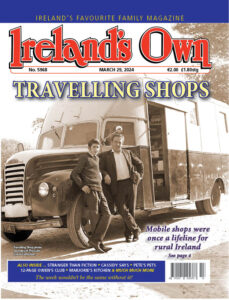By David Flynn
Gene Autry was a legendary easy-listening singer, who was famous for his songs and for starring in Hollywood movie shorts in the 1930s and 40s, usually where he played Wild West heroes. After a very prolific career, which included a long stint on radio, Gene brought his movie persona to television.
Gene was a crooner who made famous many Christmas records including ‘Rudolf the Red Nosed Reindeer’ and ‘Frosty the Snowman’, including many other hits like ‘Back in the Saddle Again’, ‘South of the Border’, ‘Don’t Fence Me In’ and ‘Have I told you lately that I Love You’, to name a few.
 The Gene Autry Show premiered on CBS television in July 1950, running on Sunday nights at 7pm. Gene always played a good guy, whether it be a lawman, rancher or ranch-hand and his character was always called ‘Gene Autry’.
The Gene Autry Show premiered on CBS television in July 1950, running on Sunday nights at 7pm. Gene always played a good guy, whether it be a lawman, rancher or ranch-hand and his character was always called ‘Gene Autry’.
His co-star, Pat Buttram had starred in numerous movies with Gene since the mid-1940s, and it was reported that Gene forgot Pat’s character’s name, while shooting some scenes for the series. Gene then told the producers that Pat’s real name should be used in the series, and so it happened from the second episode onwards. The third cast-member was Champion – Gene Autry’s horse. Champion, who had been featured with Gene in movies since the early days, became a star in his own right.
The first episode of The Gene Autry Show featured Gene as a ranch foreman, who encounters cattle rustlers on his ranch, and after he and Pat are framed for rustling, they set out with help from others to prove their innocence. The half-hour black and white episode set the stage for a Sunday night date with Gene Autry that continued throughout the early 1950s.
The first season had 26 episodes and the second season begun in October 1951. The Gene Autry Show continued on Sunday night at 7pm on CBS. The competition was a little tougher during its third season because it was up against a comedy/variety programme, The Red Skelton Show on NBC, which was the No. 28 show in the country for the season. However Gene Autry continued with his western show, which was popular because of its similarity to many of the old B westerns which were also shown at the time.
Continue reading in this week’s Ireland’s Own


